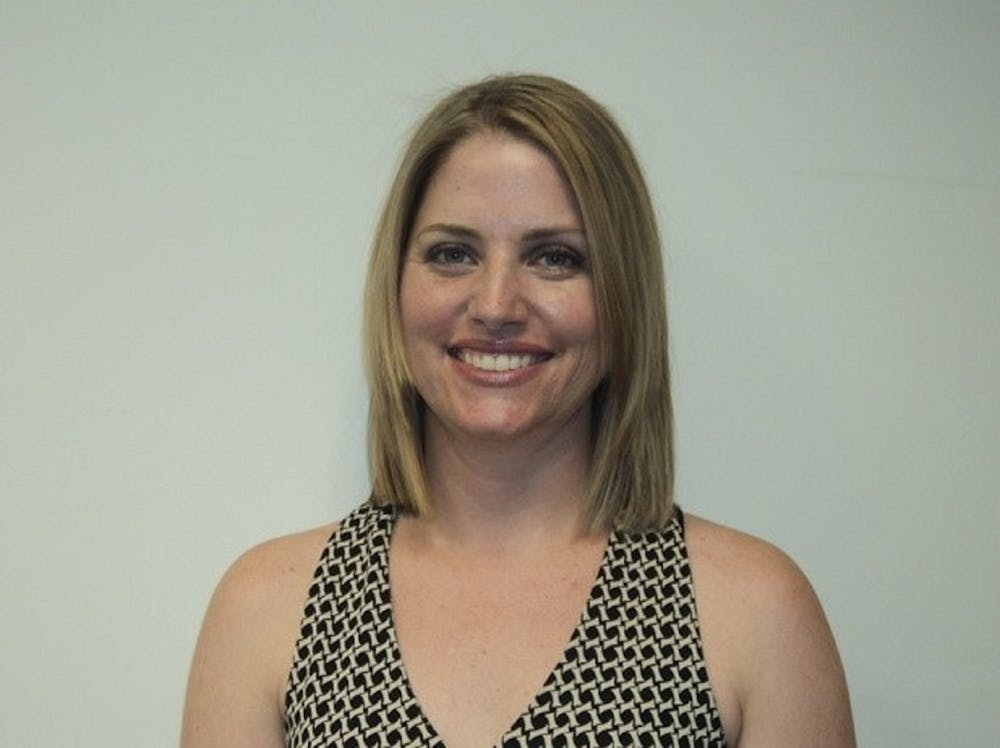Shana Harrington's collegiate swimming career led to two things: shoulder surgery and a job.
Due to Harrington's extensive knowledge of the shoulder, Claudio Battaglini requested her help with his “Get Real and Heel” exercise and psychosocial therapy program for breast cancer patients at UNC Chapel Hill.
Harrington, a clinical associate professor in the Arnold School of Public Health exercise science department, conducts research and works with breast cancer patients to improve upper body strength and function through physical therapy.
“My primary interest is working with cancer survivors,” Harrington said. “I was fortunate to start working with … colleagues with some work in implementing early rehabilitation with these women upon diagnosis.”
Though rehabilitation might not be at the forefront of cancer patients’ minds, research from Harrington’s doctorate showed that “six months after treatment, whether it was surgery and/or chemo, radiation, these women were having some pretty significant deficits with their range of motion, their functional mobility.”
Rehabilitation can aid in improving cancer patients’ functional ability and quality of life “by allowing them to be able to do the things that they want to do,” said Marie McGowan, the senior physical therapist at Prisma Health.
McGowan said she met Harrington almost three years ago and the two quickly struck up a partnership. McGowan has been a physical therapist for 31 years and a certified lymphedema therapist for the past 20.
Due to surgery or radiation, breast cancer patients’ lymphatic system is often damaged. This typically causes swelling in the arms, so Harrington and McGowan massage patients and do bandage and compression treatments to reduce swelling. McGowan said they also encourage exercise to strengthen upper body strength and function, and teach their patients how to keep from swelling.
Harrington and McGowan’s patients are referred to them by a physician and they follow them throughout their entire treatment journey — from diagnosis until end of life care. They keep track of data from people who do and do not receive physical therapy and check to see if range of motion and quality of life are different as a result.
“A lot of people are like, 'Well they just don’t have time for rehab,'” Harrington said. “I would kinda counter argue that and say a lot of these patients … say that it is very beneficial for them, and the fact that a lot of them are surviving so much longer, you know, the rehab can really help them improve their quality of life down the road.”
While it might seem like rehabilitation is a common enough referral among cancer patients, only 1 to 2% of cancer patients with remediable physical impairments receive treatment, according to a 2017 research article by Cheville et al.
“What I’m doing can be used to talk to women and help them advocate for seeing physical therapy and rehabilitation as part of their treatment team,” McGowan said. “I think that it’s a very underutilized area, and I think that if we start to show really good outcomes, then more people will get the word … and be hooked up with physical therapy.”
Harrington received a grant so she could look at the impact and benefits of early rehabilitation. She said she hopes publishing her data will help enlighten patients, doctors and physicians about its importance.
“I really think that I do make a difference in people's lives,” McGowan said. “As they go through the cancer treatment process, we really help inform them and educate them in a way that other healthcare professionals don’t.”

